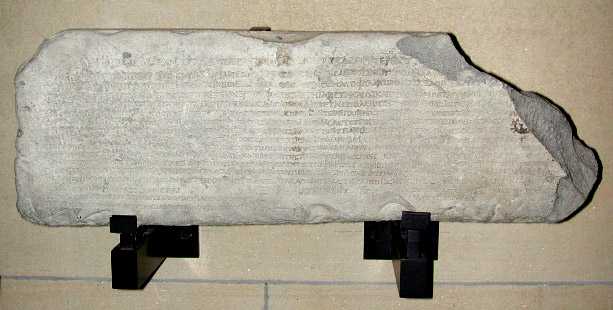| 11 AD - 38 AD |
Αρτάβανος Β΄
| Drachm AR |
SHH
72 |
 |
| Parameter Obverse Reverse Notes Reference Acquired Electrical Conductivity Composition Composition |
3.78
g 17.7-21.5
mm 12:00 o'clock VF σmax(SigmaTest, 240 Hz) = obv. 18.4 rev 17.4 MS/m μ-XRF ground edge 23 % Cu Diademed and cuirassed bust left, with long rectangular beard, and long hair revealing ear-ring; border of dots. Archer seated right, holding bow beneath which monogramm; above ΒΑCΙΛΕΩC / ΒΑCΙΛΕΩΝ ; on right ΑΡ/ΣΑΚΟV; in exergue ΕVΕΡΓΕΤΟV / ΔΙΚΑΙΟV ; on left ΕΠΙΦΑΝΟVC / ΦΙΛΕΛΛΗΝΟC Ecbatana mint. Partly blundered inscriptions. Copenhagen 166/169 (Gotarzes II 38-51 AD); Gardner Pl.V 20 (Gotarzes); Sear Greek 5776; Sellwood 63.6 30.9.2003 Electrical Conductivity σ [MS/m] SigmaTest
XRF-Analysis, surface patina Rathgen OXFORD-Analyser
μ-XRF-Analysis,
core edge patina ground away ArtTAX Pro,
80-100 µm Spot
|
|
Letter
from Artabanus II to Susa, Validating the Election of the City Treasurer
December,
A.D. 20
|
 |
This block of grey marble was found by M. de Mecquenem at Susa in 1931/1932. It is 65 cm long, 22 cm. high and 16 cm thick. It is presently located in the Louvre Museum, Paris, in the gallery dedicated to Parthian and Sasanian artifacts, accession Sb 2786. The marble apparently decorated the base of a statue. In the inscription, the Parthian king overrules constitutional term limits in the case of a city treasurer and validates his reelection. |
| The letter is single-dated year 268 (Parthian era) Audnaeus 17, that is, 17 December A.D. 20 which places it in the reign of Artabanus II (c. A.D. 10 - 38). Using the obsolete chronologies of the late 19th and early 20th centuries, the inscription was previously attributed to Artabanus III. Internally, the letter makes several references to Seleucid era years, 330 S.E. (A.D. 18/19), 331 (19/20) and 332 (20/21). |